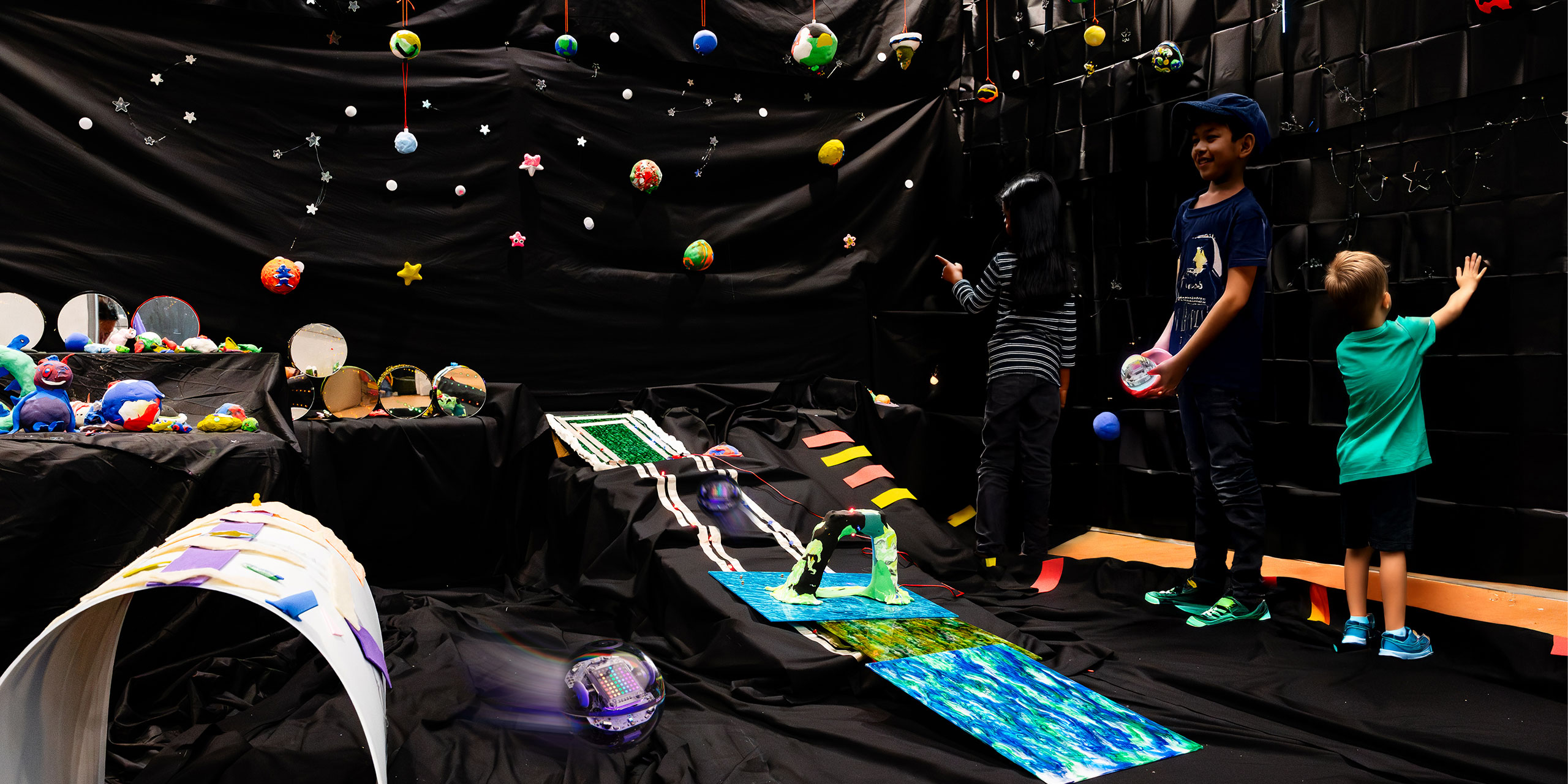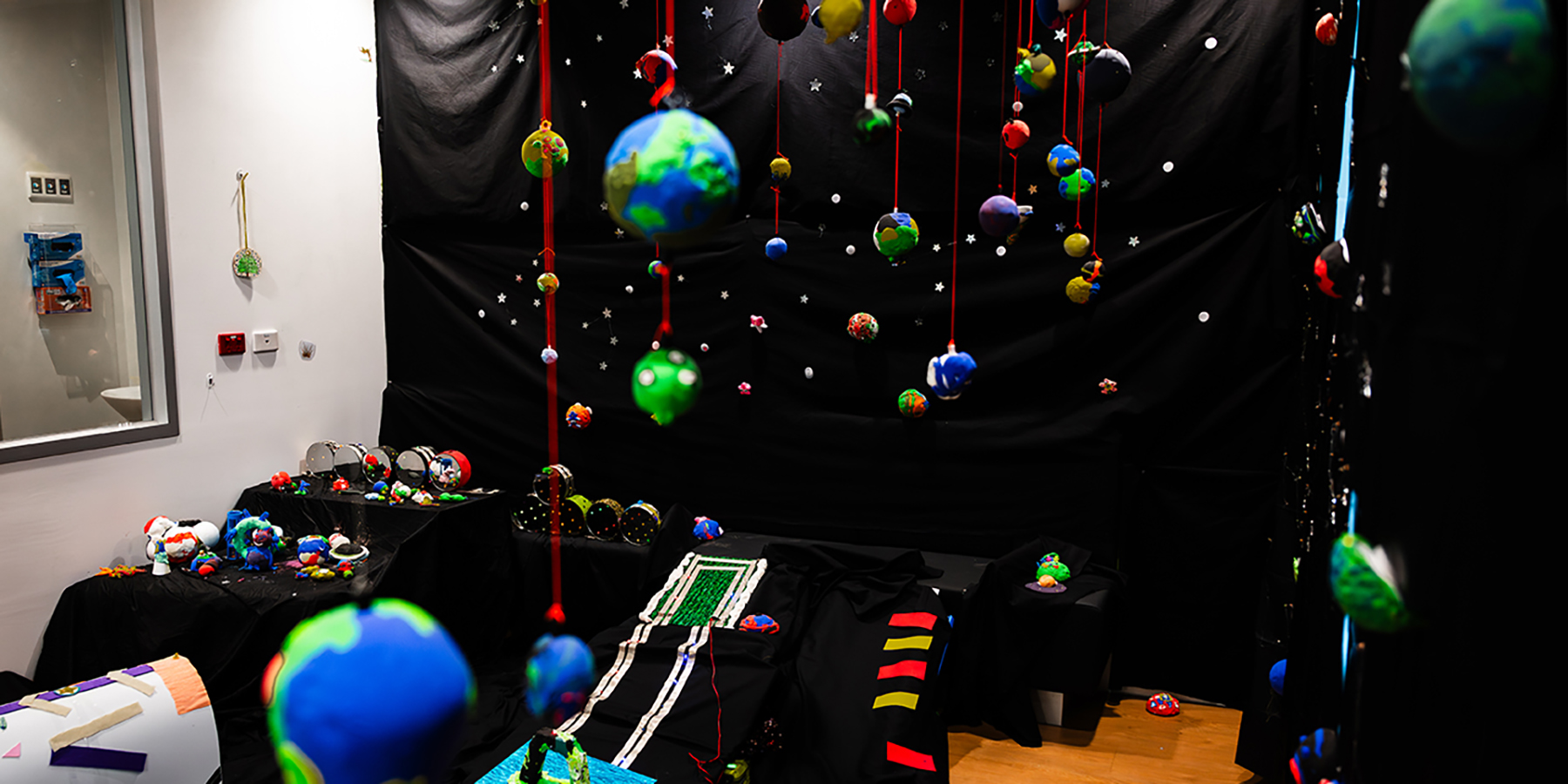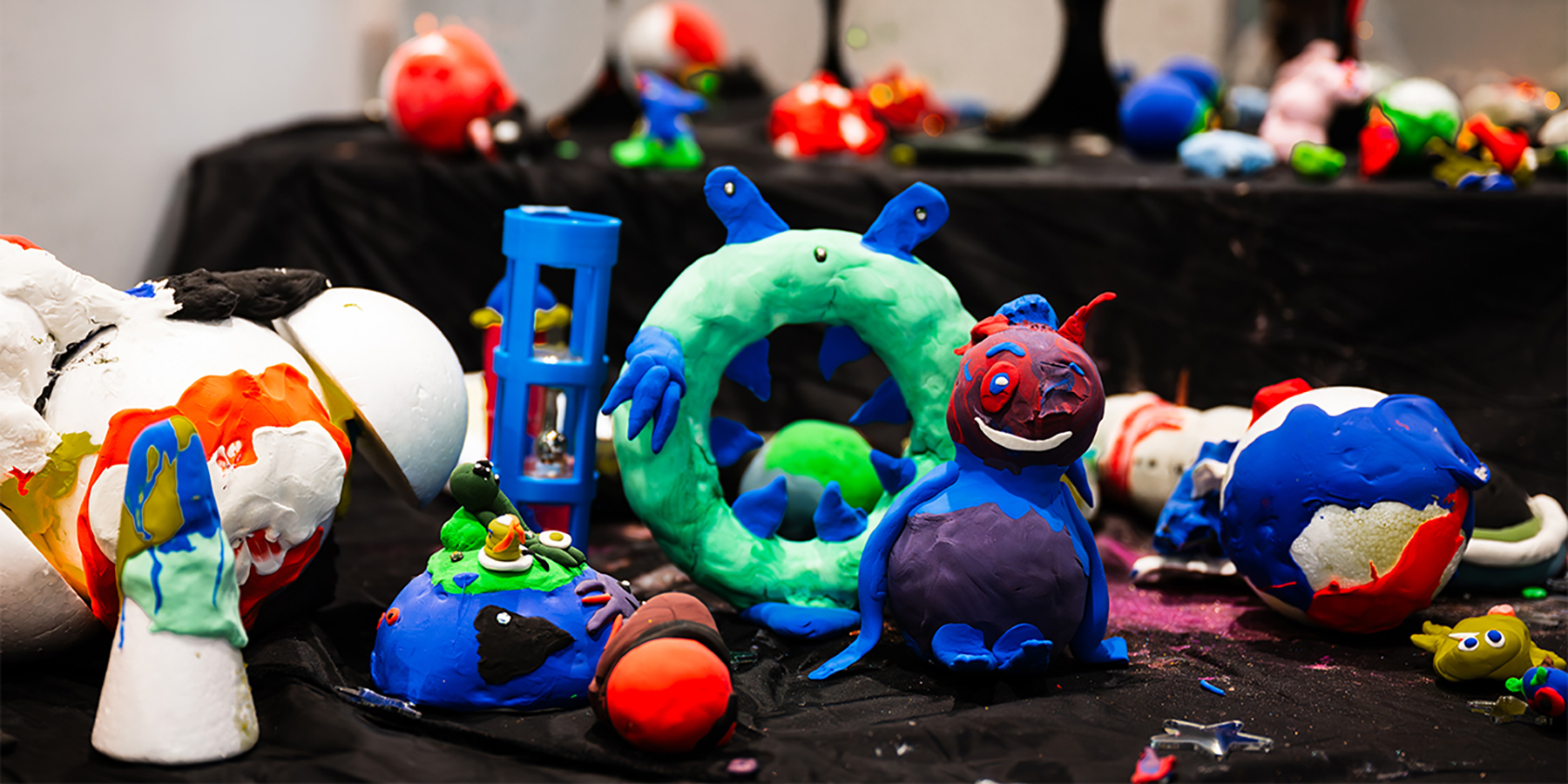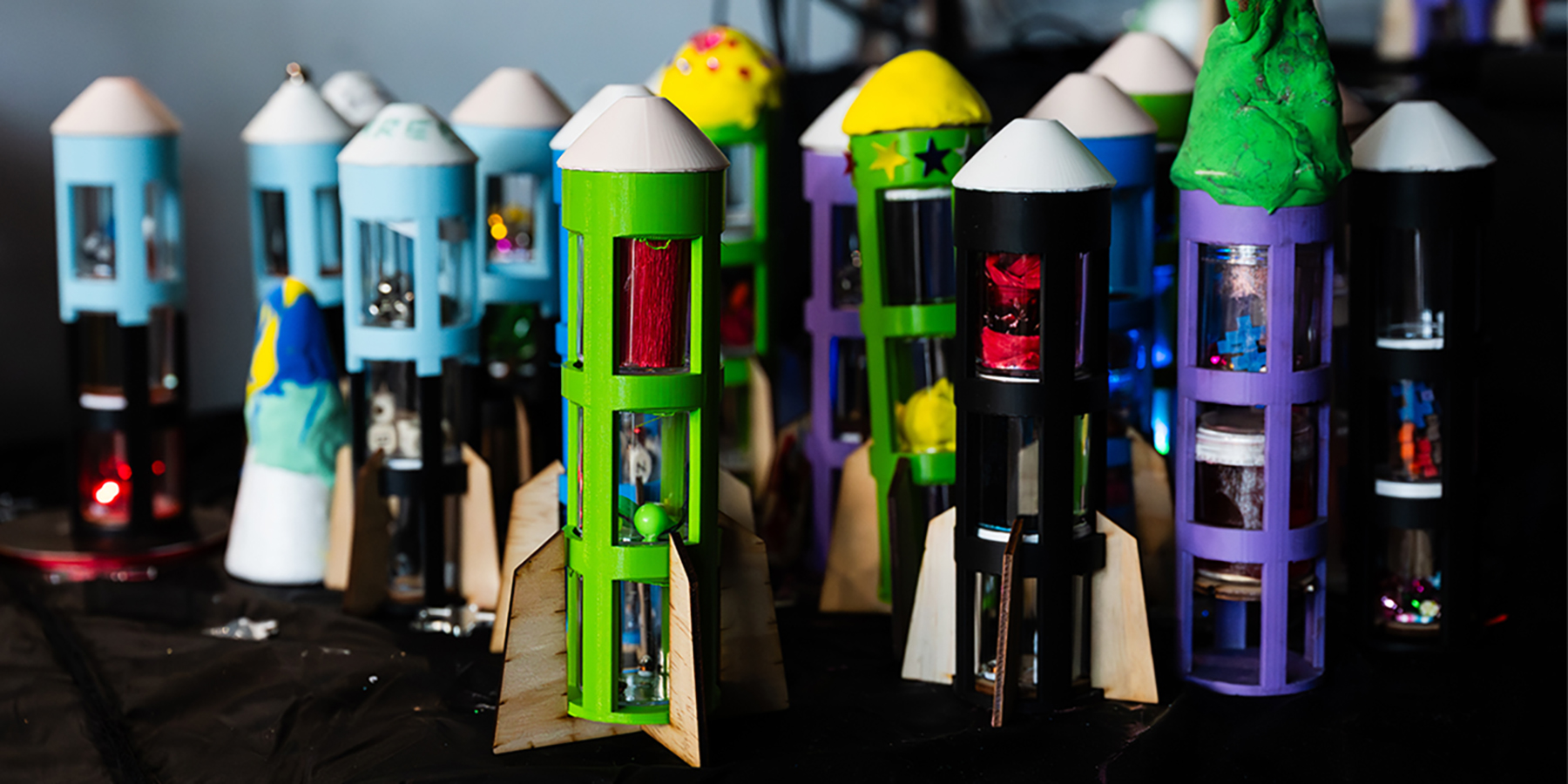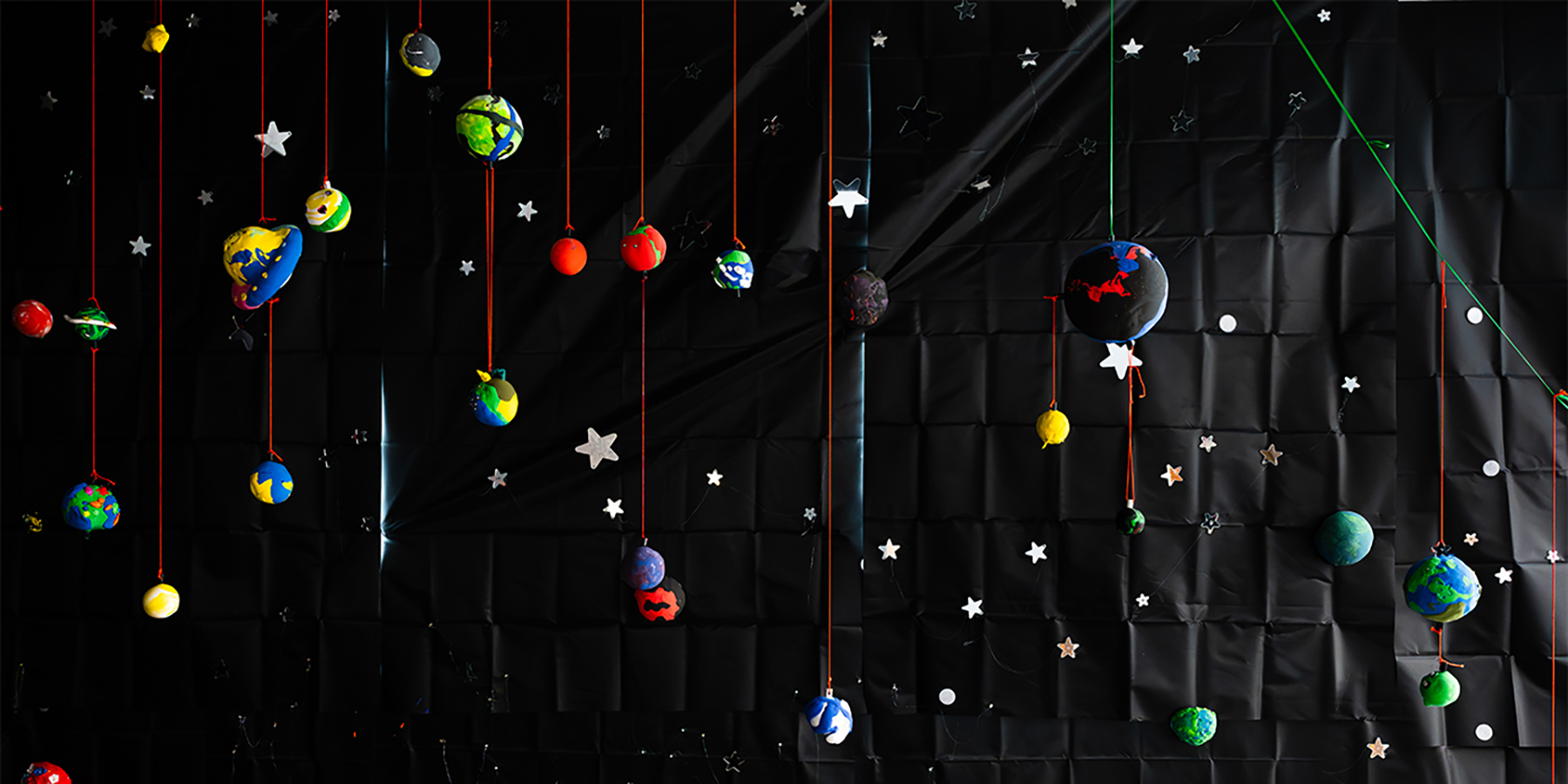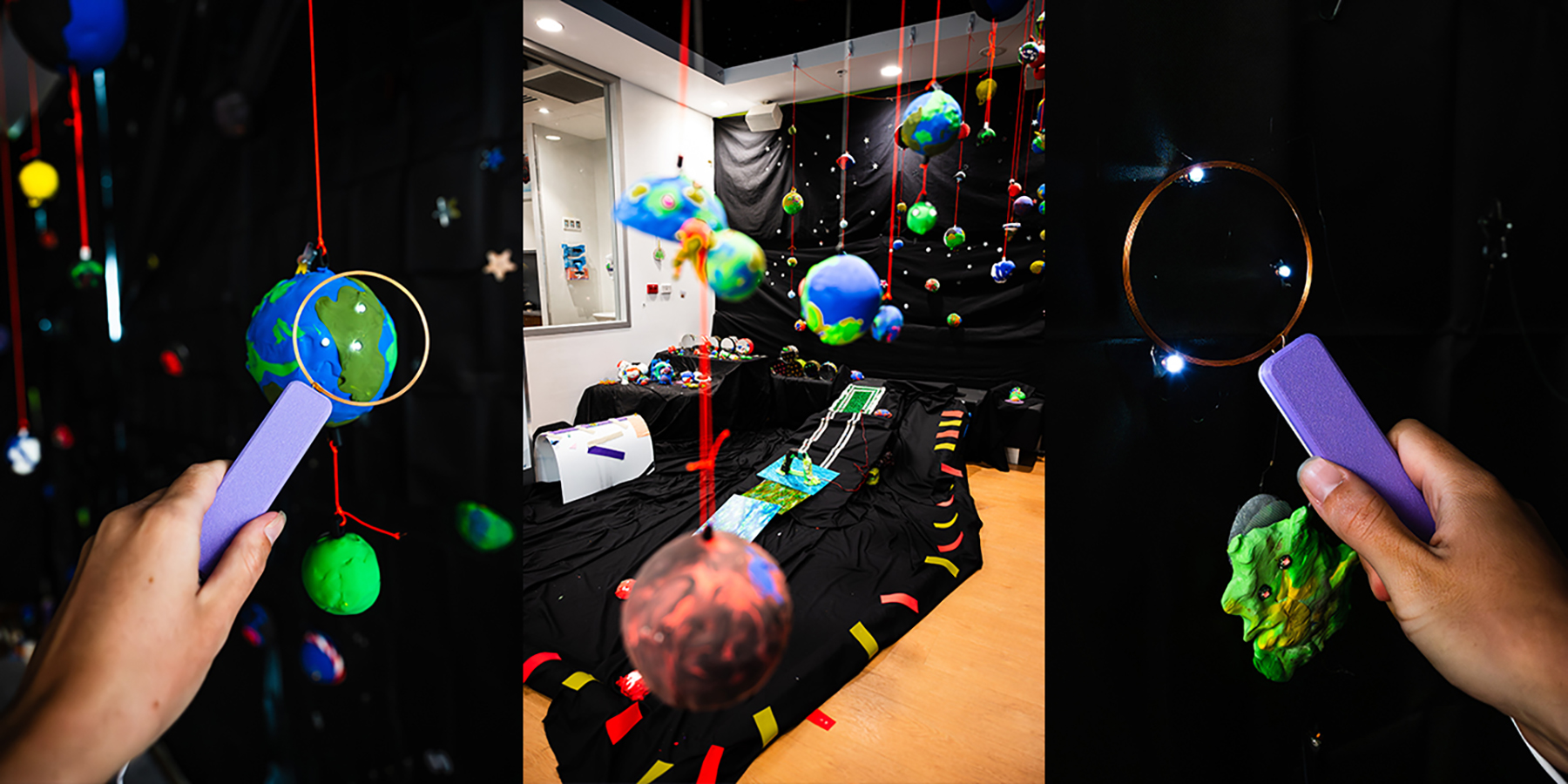This project followed a rigorous, human-centred design process, grounded in consultation with those closest to the experience, including children, families, the Starlight Captains and staff.
It began with a discovery phase, which included interviews with Starlight’s management team to understand priorities, constraints, and opportunities for screen-free, technology-enabled, generative play in a clinical setting.
Drawing on co-design methodologies, the team facilitated a multi-stakeholder workshop with children, families, and Starlight Captains to explore making materials and technologies. Participants trialled prototyping activities and shared feedback on how engaged they were, how accessible the activities felt, and whether they met infection-control requirements.
The co-creative engagement was then delivered over two weeks at Monash Children’s Hospital, transforming the Starlight Express Room into an immersive, space-themed environment. Using tactile, screen-free HCI technologies, such as inductive LEDs, air-dry clay, and 3D-printed structures, children created interactive aliens, planets, galaxies, and rocket ships. The children chose where and how to exhibit their work, fostering a sense of agency and ownership.
Based on real-time observations and staff feedback, a semi-autonomous robot track was introduced midway through the program, to extend the environment’s play potential, demonstrating the project’s responsive design approach.
The program sought to lower barriers to technology-enabled making within a healthcare setting while fostering greater emotional engagement and creative expression among participants. The materials, activities, spatial layout, and task sequencing were carefully considered to accommodate diverse cognitive, emotional, and physical needs while scaffolding inclusive and joyful engagement.
The project was co-led by Monash University researchers and delivered in close partnership with the Starlight staff, resulting in the development of a replicable strategy for inclusive, technology-enabled co-creation in paediatric healthcare.
In contrast to conventional screen-based distractions, this project exemplifies how design can reimagine paediatric hospital experiences through technology-enabled generative play and co-creation.

